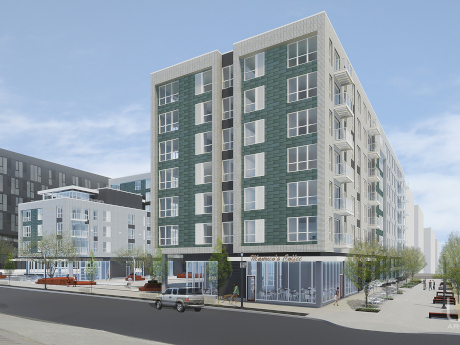By Jordan Carter, Executive Vice President, Kidder Mathews
Much like the city itself, Portland multifamily owners are no stranger to adversity — whether that refers to the weather, news media or the instability of today’s economy. There’s no doubt the rising interest rate environment will have an impact on the lending market for both refinances and sales in the short-term, but the good news is market fundamentals in the Portland metro remain solid.
At 4.53 percent, our vacancy rate sits well below the national average of 4.98 percent, per CoStar. The average apartment rent is now $1,600 per month, thanks to year-over-year rent growth of 8.5 percent, which CoStar projects to remain near 5 percent for the next couple years.
New construction, which peaked at nearly 13,000 units in 2018, has slowed dramatically due to legislative and policy changes that have disincentivized developers. These challenges have been magnified by elevated material costs and an arduous permitting process. Year-over-year deliveries of 4,000 units illustrate the dramatic slowdown, as they’re well below the supply needed to meet a demand of more than 10,000 new units
annually. The hot single-family home market also continues to push prospective home buyers out of the market. Residential interest rates have doubled since December, further exasperating new home buyers. This priced an additional 168,000 households out of the home buying market in the past six months alone, notes state economist Josh Lehner.
Despite the positive market fundamentals, the rapidly increasing interest rates are starting to have an impact on the multifamily sales market in terms of both sales volume and prices. Sales volume through June looks to be on track for an average year. However, by year-end, the volume of sales will be dramatically down from the historic levels of 2021, which reached more than $4 billion. While sales should slow, there is still demand in Portland for well-located properties, especially those with some sort of value-add component.
The larger, more return-driven investors are feeling the biggest pinch. This is because cap rates for institutional assets now sit well below interest rates, dramatically affecting returns. Smaller properties and investors are less sensitive to rate increases as many are driven by tax savings through 1031 exchanges.
The impact of changing economic and market conditions remains to be seen. Thankfully — despite some challenges at the local and national levels — Portland’s affordability on a regional basis remains attractive to investors. If the Great Recession indicated how the Portland multifamily market might weather an upcoming storm, there are plenty of reasons to remain optimistic.


